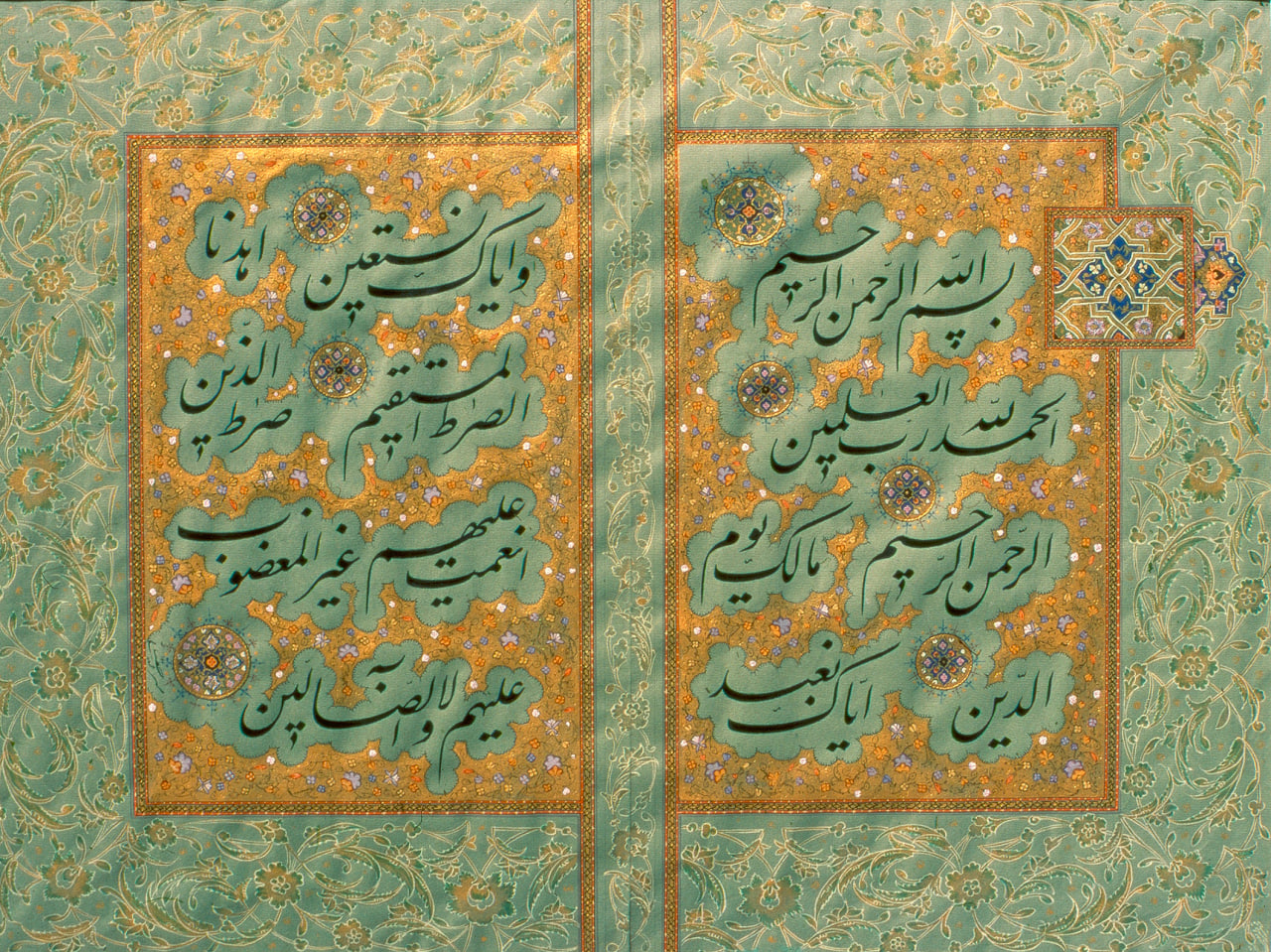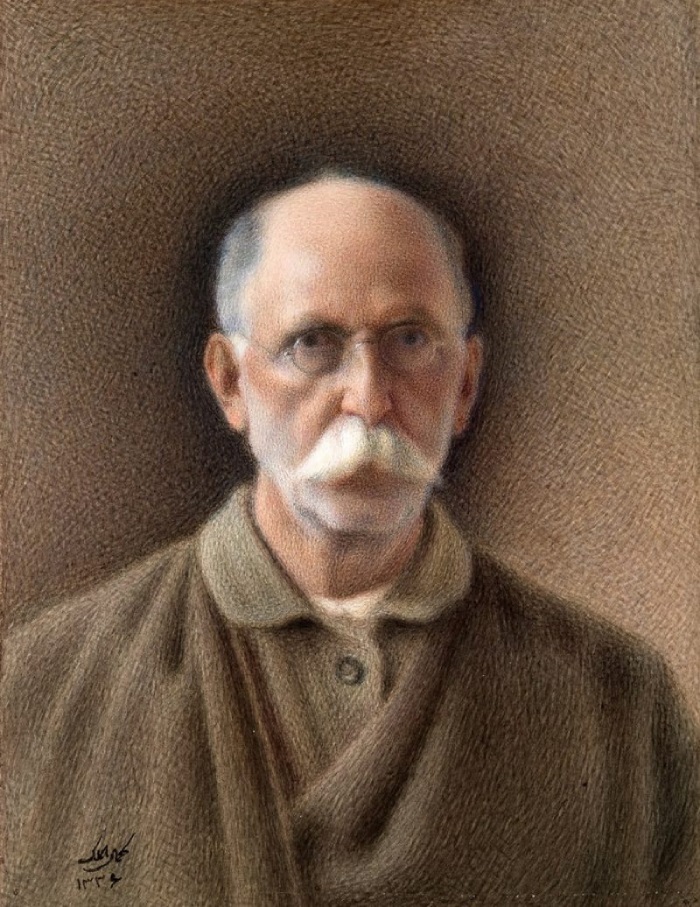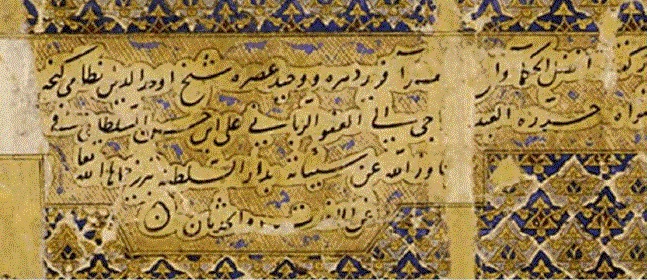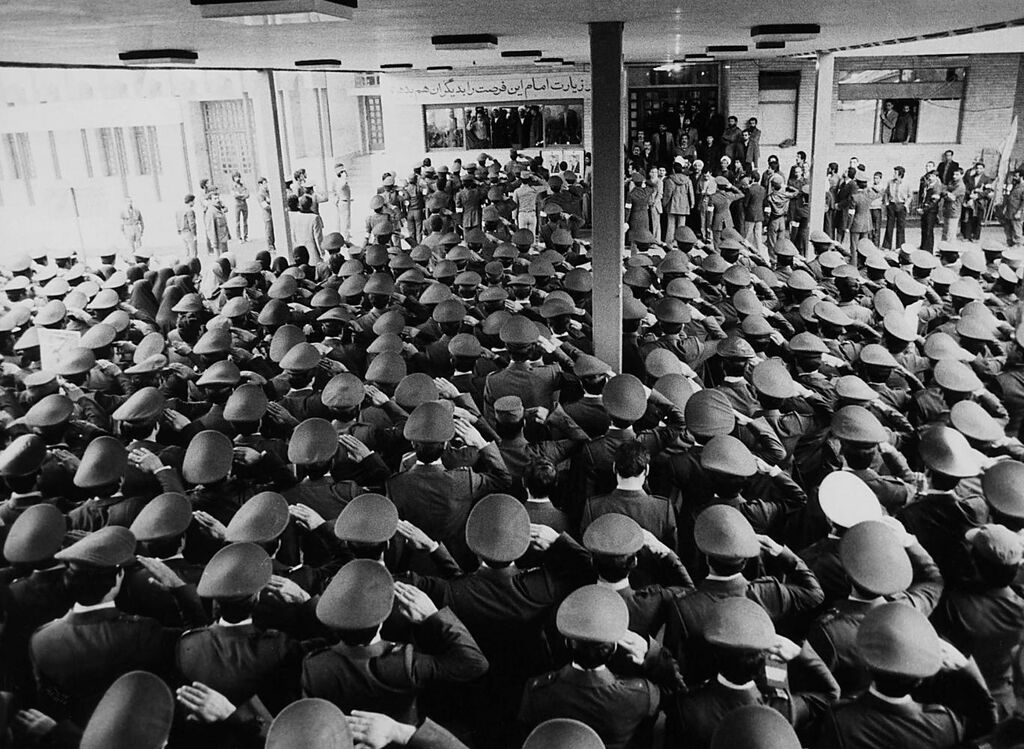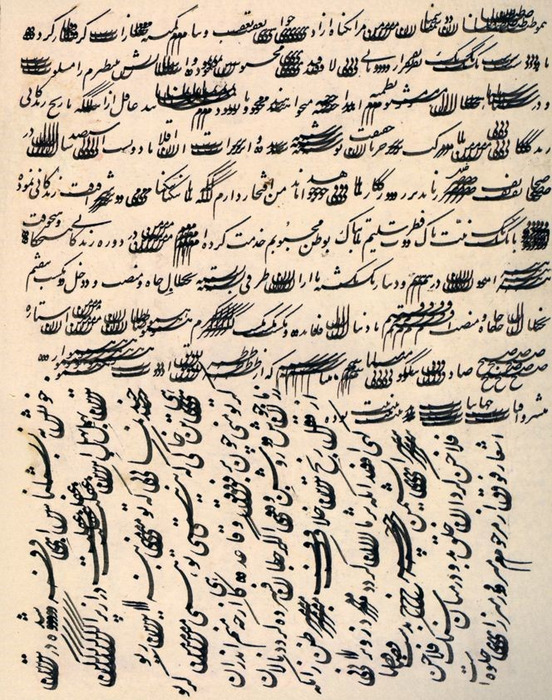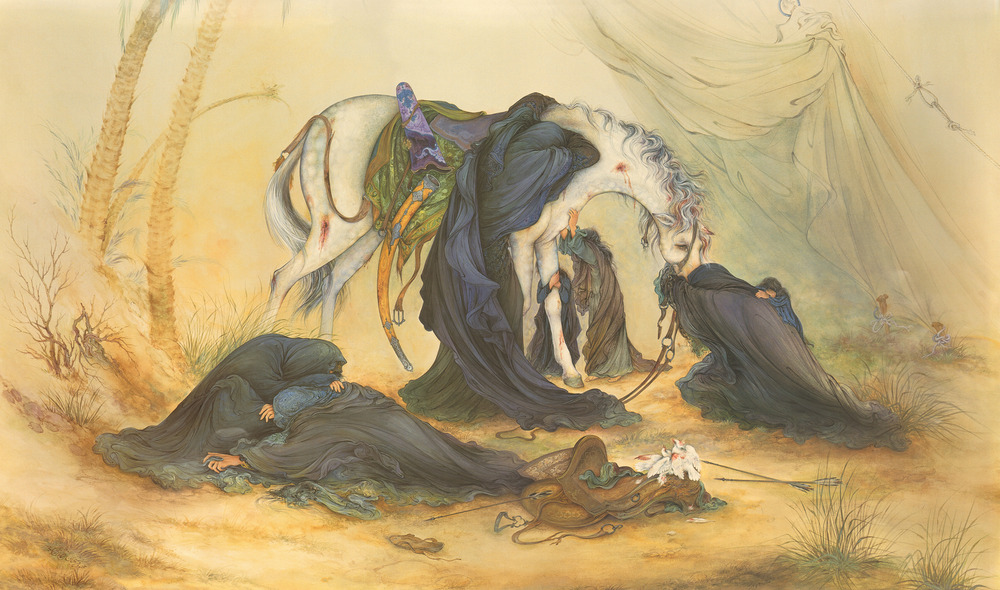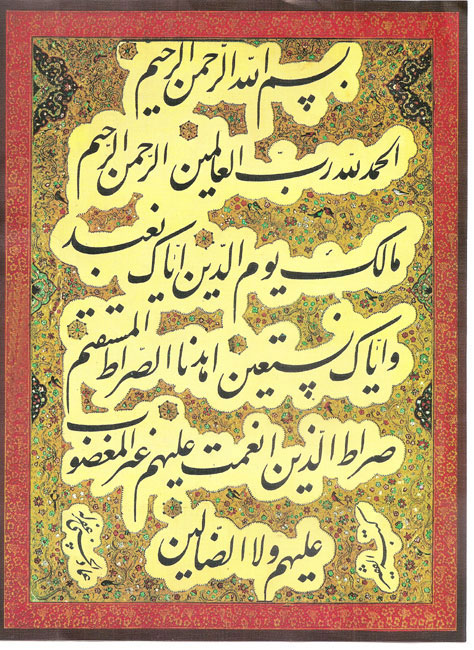
Mir Emad: The Master of Nasta‘liq Calligraphy in Iran
Mir Emad: The Master of Nasta‘liq Calligraphy in Iran
Mir Emad Hassani Seifi Qazvini was one of the most celebrated Iranian calligraphers, born in 961 AH in Qazvin. His father and ancestors, who were descendants of the Hasani Seyyed’s of Qazvin, held positions in the administration of the Safavid rulers and were all people of taste, intellect, and culture, well-versed in art and literature. Notably, his grandfather Mir Hasan Ali was considered one of the foremost calligraphers, secretaries, and bibliophiles of his time. Thus, Mir Emad’s upbringing in a cultured family connected to the governing apparatus and influential circles played a significant role in his social and cultural development . He initially pursued studies in literature, and since calligraphy was considered one of the twelve essential literary sciences of that era, he entered this field and began his training. His innate talent, hereditary influences, and meticulous nature all combined to make his calligraphy recognized in Qazvin, gradually surpassing the works of other local masters. It wasn’t long before Mir Emad, seeking to benefit from the guidance of the renowned calligraphers of his time, traveled to Tabriz and became a student of Mohammad Hossein Tabrizi, a prominent master of the Nastaʿlīq script. After some time, Mir Emad decided to travel in order to familiarize himself with the works of calligraphers from other Muslim lands. One of his most significant journeys was to the holy sites of Mecca, where he studied the calligraphic works of great predecessors adorning the Kaaba and the mosques. Eventually, feeling the call of his own artistic mission, Mir Emad returned to Iran. His artistic activities continued in Qazvin until, owing to the city of Isfahan’s unique political and artistic importance, he decided to relocate there. Initially, Mir Emad followed the style of Mir Ali Heravi, but after arriving in Isfahan and gaining access to calligraphic pieces by Baba Shah, he grew to admire Baba Shah’s method. Likely through practice and copying of these pieces, he gradually adopted Baba Shah’s style for his own writing. Mir Emad’s presence in Isfahan coincided with the reign of Shah Abbas the Great (996–1038 AH), a historically significant period in terms of the sociology of art, fostering an environment that nurtured artistic growth and the development of talented artists. At this stage, the great Mir Emad also became affiliated with Shah Abbas’s cultural court. What mattered most to him at that time was the flourishing of calligraphy and the broader dissemination and promotion of this authentic art. Mir Emad also considered part of his artistic mission to be the establishment of a close connection between artists from Iran, India, and the Ottoman Empire—an endeavor that could only be realized in Isfahan.
During his sixteen-year residence in Isfahan, he trained hundreds of students, some of whom became leading masters in their own right, including Noor al-Din Mohammad Lahiji, Seyed Ali Khan Javaher-raqam, Abdul Rashid Deylami, and Mir Ebrahim Abutorab Esfahani. It is also important to note that Mir Emad’s expertise was not limited to calligraphy alone; he possessed deep knowledge of both Persian and Arabic literature and was accomplished in both prose and poetry.
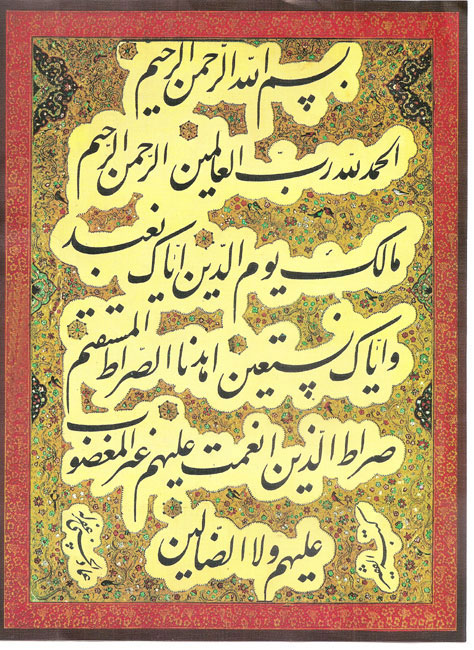
Calligraphy of Surah Al-Fatiha by Mir Emad
Artistic Style and School of Mir Emad
Regarding the criteria of Mir Emad’s school and script, it is stated that the method of writing individual letters and words, their proportions, double-line writing (Do-danag), intentional irregularities, word composition, adherence to the Korsi line, various slanting styles, the strength and weakness of pen pressure, and the choice of ink color all fall within the characteristics of his particular penmanship. From an aesthetic and stylistic standpoint, Mir Emad’s script possesses such distinctive qualities that it is recognized as an independent school within the art of calligraphy. Among this artist’s works, the emergence of a distinct school and aesthetic in calligraphy is most evident in his Chhelipa (diagonal cross) compositions. This assertion can be supported by two main points: first, the centrality of Mir Emad’s pen and the characteristics of his writing school, and second, the importance, value, and artistic status of the Chhelipa format among other calligraphic forms. One reason for the formation of Mir Emad’s unique style is that his surviving works were far more widely viewed than those of previous calligraphers, and his prominence and unrivaled mastery during his time inspired subsequent calligraphers to emulate, study, and practice his style both theoretically and practically. Therefore, Mir Emad’s distinctive method was continued by his students and many other calligraphers, gradually becoming the dominant style of the era. His brilliant works also had an international impact, particularly in the Ottoman Empire and India, where his style became the prevailing method among calligraphers. Followers of Mir Emad proudly took on the names “Emad-i Rum” or “Emad-i Thani” and promoted his method in their own regions. Notable disciples in the Ottoman territories included Wali al-Din Efendi, Muhammad Rafi‘ Katibzade, and Muhammad As‘ad Isfahani. It is said that Mir Emad would exchange his calligraphy for gold during his lifetime, and by the time of his death, he was among the wealthiest men in Iran. Through refining and correcting the scripts of his predecessors, removing impurities, and harmonizing the proportions of letters and words, he achieved the highest degree of aesthetic perfection, akin to the golden ratio, thereby making a key contribution to the elevation of Nastaʿlīq script.
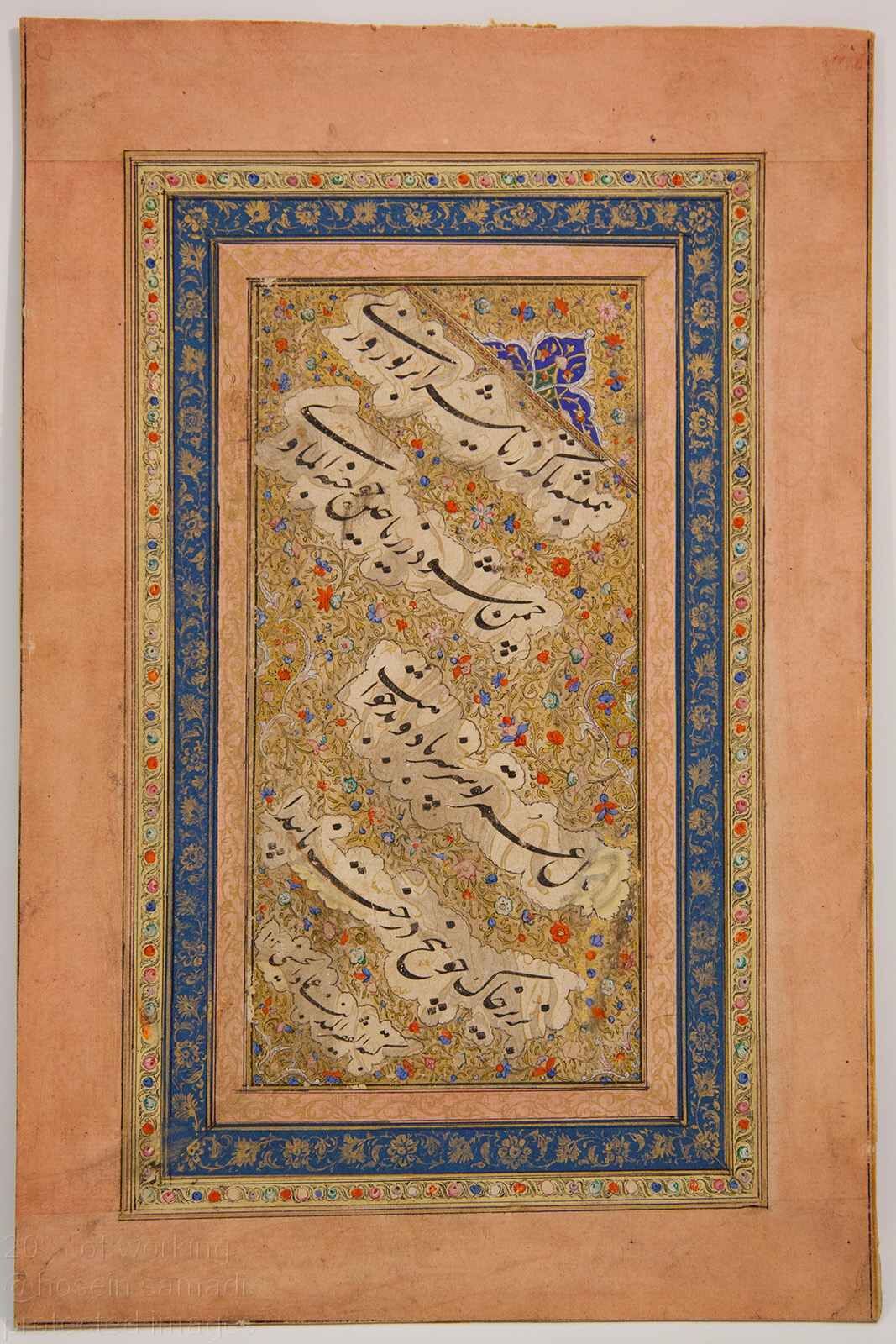
Chhelipa by Mir Emad
Classification of Mir Emad’s Works
Mir Emad’s calligraphic works can generally be categorized into four main groups:
a) Books:
These include copies of classical literary and religious texts, such as: Tuhfat al-Ahrar by Jami,Divan of Hafez, Golshan-e Raz by Sheikh Mahmoud Shabestari, Golestan by Saadi,Takmela-ye Nafahat, Masnavi-ye Goy o Chogan by Arifi, Tuhfat al-Muluk, Al-Asma al-Husna, Subha al-Abrar by Jami and others.
These include copies of classical literary and religious texts, such as: Tuhfat al-Ahrar by Jami,Divan of Hafez, Golshan-e Raz by Sheikh Mahmoud Shabestari, Golestan by Saadi,Takmela-ye Nafahat, Masnavi-ye Goy o Chogan by Arifi, Tuhfat al-Muluk, Al-Asma al-Husna, Subha al-Abrar by Jami and others.
b) Treatises and Pamphlets:
These include instructional and literary works, such as: Nasaih, Munajat by Khaja Abdullah Ansari, Zinat al-Muluk, Munajat of Imam Ali (AS), Pandnamehof Jami for his son, Haft Band by Hossein Kashani, Rubaiyat of Khayyam, and similar texts.
These include instructional and literary works, such as: Nasaih, Munajat by Khaja Abdullah Ansari, Zinat al-Muluk, Munajat of Imam Ali (AS), Pandnamehof Jami for his son, Haft Band by Hossein Kashani, Rubaiyat of Khayyam, and similar texts.
c) Marqa‘ (Collections of Practice Sheets):
Various practice sheets written with different pens and styles, often used for instruction or display of skill.
Various practice sheets written with different pens and styles, often used for instruction or display of skill.
d) Pieces:
Individual or combined calligraphic panels, including collaborations with other calligraphers. The numbered pieces attributed to Mir Emad total approximately 160 items.
Individual or combined calligraphic panels, including collaborations with other calligraphers. The numbered pieces attributed to Mir Emad total approximately 160 items.
In conclusion, it can be said that Mir Emad’s outstanding works now adorn major museums in Iran and around the world. Some of his pieces have been transferred to the Calligraphy Museum of Qazvin in the Chehel Sotoun Palace. In addition, a valuable collection of Mir Emad’s works has been published and is accessible to enthusiasts of authentic Iranian Nastaʿlīq calligraphy at the Metropolitan Museum of Art in New York. The enduring calligraphic school founded by Mir Emad continues to thrive even after approximately fourteen centuries, attracting devoted admirers. Mir Emad passed away in 1024 AH at the age of sixty-three. His tomb is situated on the eastern side of the small courtyard of Maqsud Beyk Mosque, in Isfahan, a city celebrated for its artistic heritage.
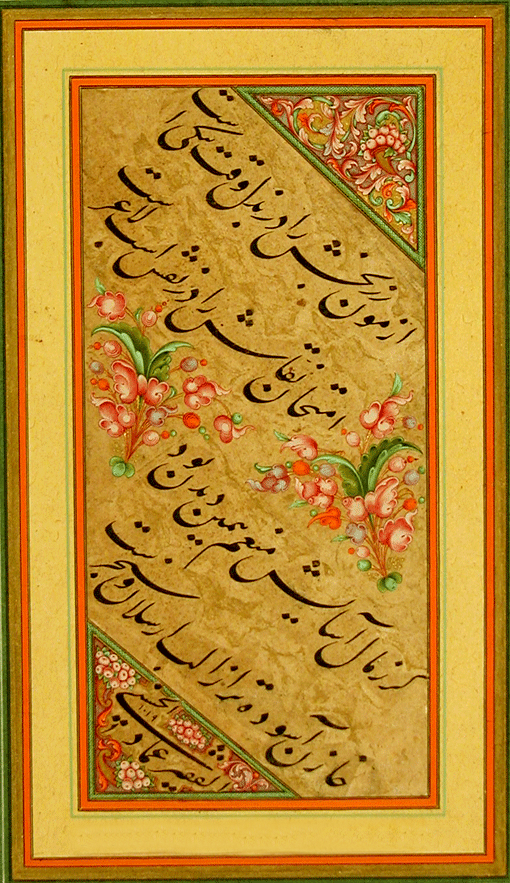
Chalipa in the Handwriting of Mir Emad
Some of the Most Important Works of Mir Emad
Some of the most significant calligraphic works by Mir Emad include:
Books: Tohfeh al-Ahrar by Jami, Divan of Hafez of Shirazi, Golshan-e Raz by Sheikh Mahmoud Shabestari, Golestan by Saadi, Takmela al-Nafahat, Masnavi-ye Goy o Chogan-e Arefi, Tohfeh al-Moluk, Al-Asma al-Hasna, Subhah al-Abrar by Jami
Treatises and Smaller Texts: Nasa’ih, Munajat by Khwaja Abdullah Ansari, Zinat al-Moluk, Munajat of Imam Ali ibn Abi Talib (A), Pandnameh by Jami for his son, Haft Band by Hossein Kashani, Rubaiyat of Khayyam
These works collectively reflect the breadth of Mir Emad’s mastery in Persian calligraphy, spanning literary, religious, and poetic texts, and showcasing his signature elegance and precision in the Nastaʿlīq script.
| Name | Mir Emad: The Master of Nasta‘liq Calligraphy in Iran |
| Country | Iran |
| Type | Calligraphy |
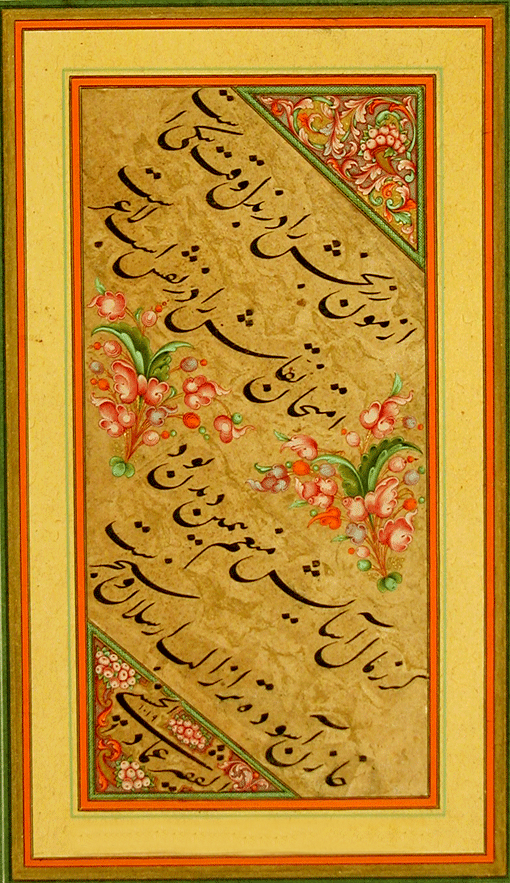
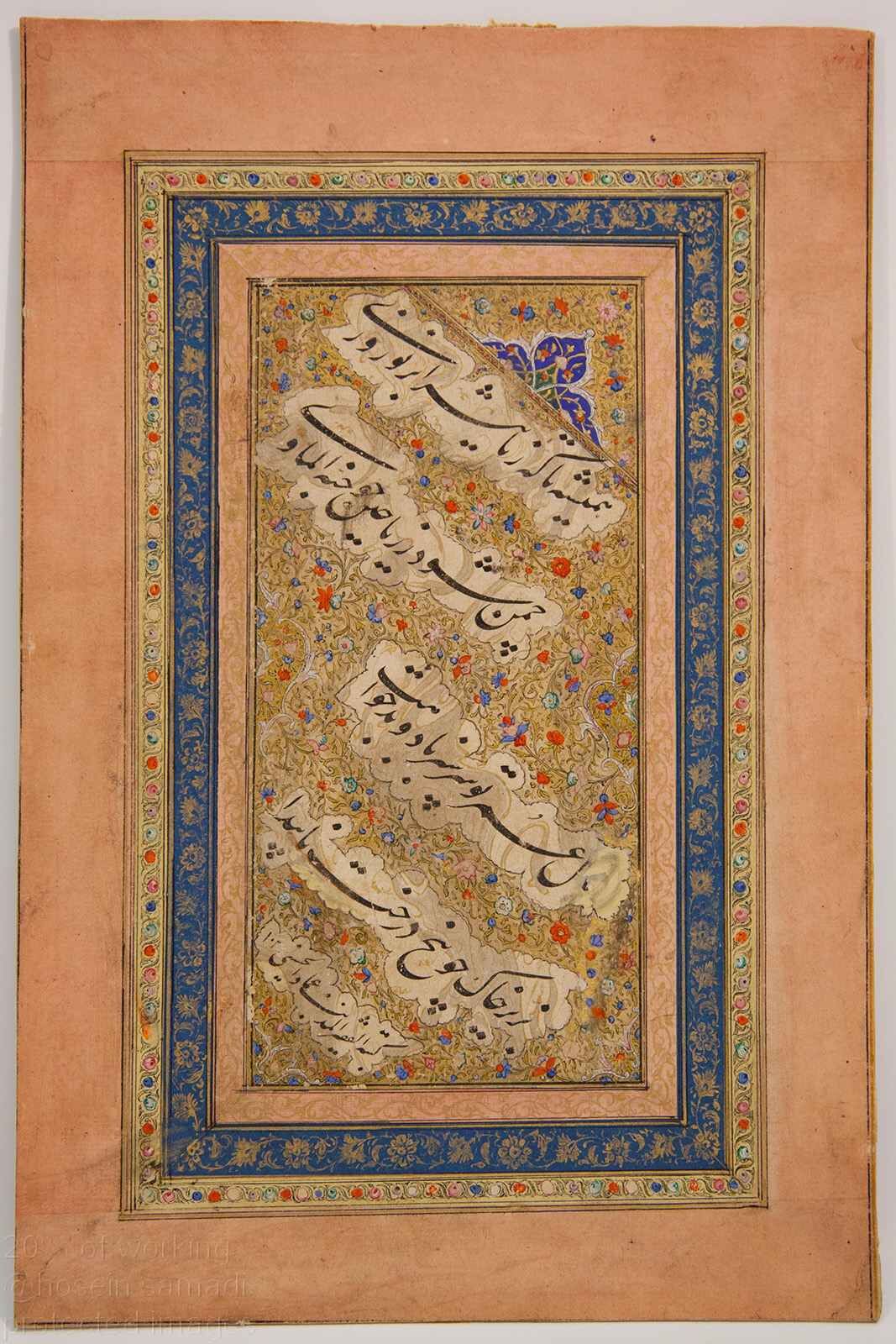
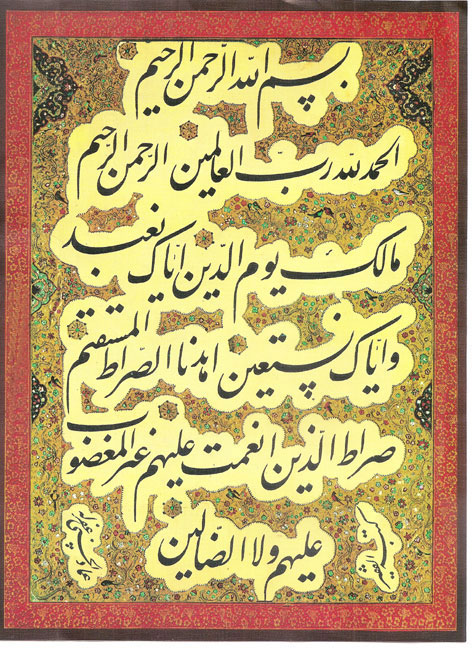



Choose blindless
Red blindless Green blindless Blue blindless Red hard to see Green hard to see Blue hard to see Monochrome Special MonochromeFont size change:
Change word spacing:
Change line height:
Change mouse type:
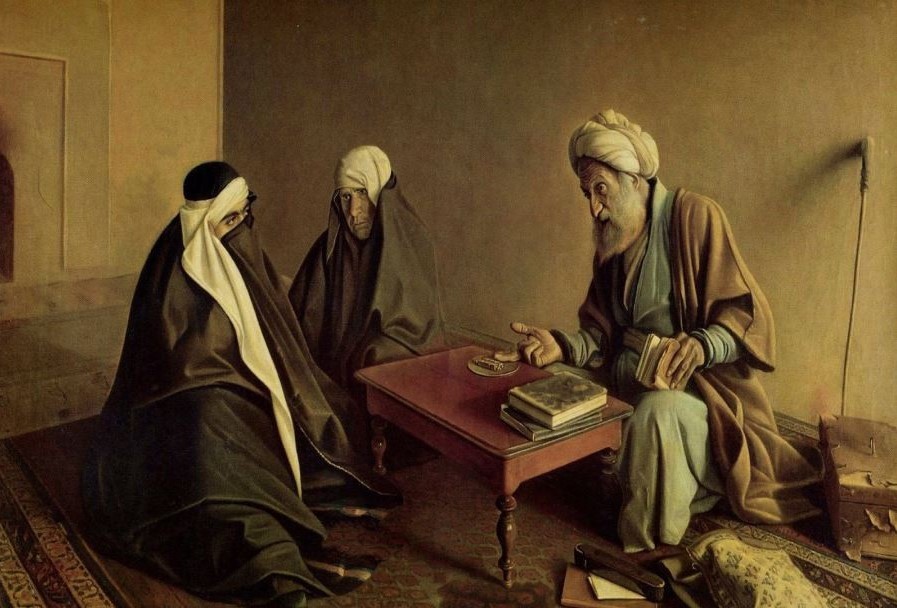

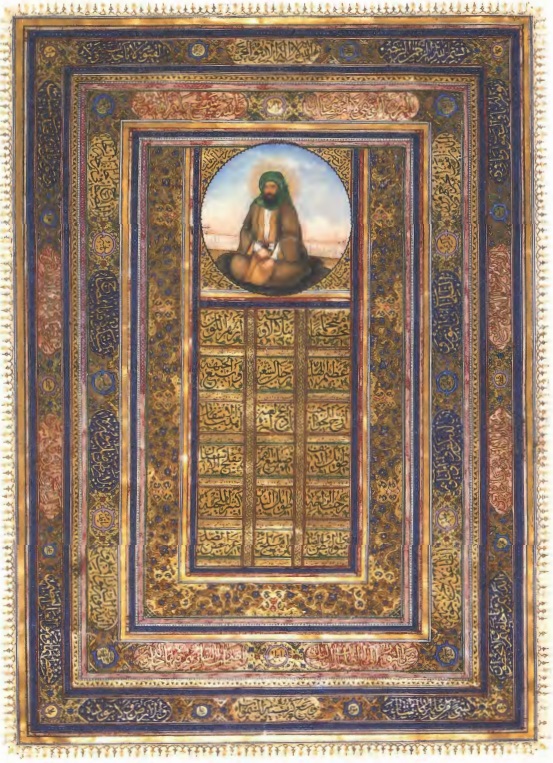
(7)_1_1.jpg)
